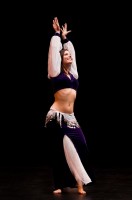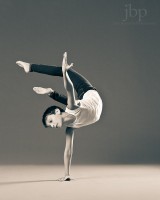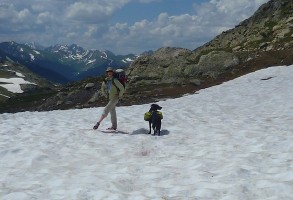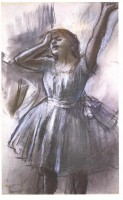Words of encouragement and a positive atmosphere helps students think more positively about themselves. Our guest writer offers some suggestions to help instructors foster a healthy self-esteem in their students. Plus there’s lots more related reading linked in the text so that you can start your new dance season on a positive note.
Archives for August 2011
Sunday Snapshot: Creation Of An Image
Austin, TX photographer, Josh Brewster thinks the best dance images are the ones where you have to ask ‘What were they doing to reach that position and shape?’ He values the collaborative process that takes place between photographer and dancer in the studio. Find out which famous painting comes to Josh’s mind when regarding this image of young, Austin Meiteen (age 11).
Nutrition On The Move: Flavor Boost Your H2O
Tired of plain, old water? Quench your thirst and stay hydrated with cucumber water instead! Motivated Nutrition’s Joanie Johnson offers Dance Advantage readers “Nutrition on the Move” in her new column dedicated to delicious recipes for dancers on the go.
I’m A Better Backpacker Thanks To Ballet
No doubt, dancers acquire some very unique traits and talents that make them very special. But dance also makes you very spatial! Guest writer, Melanie Doskocil muses on how this ability has supported her backpacking hobby in the first of a series about the sometimes surprising life lessons and skills we learn through dance. Read her amusing account of how ballet comes in handy in the wilderness and stay tuned for more from Ballet’s Un-X-pected Lesson Files.
How To Help Your Students Conquer First Day Jitters
Everyone is nervous on the first day of a new class but it can be especially hard for young dancers. This article is packed with great tips for teachers as Stacey Pepper Schwartz shares her methods for easing the anxieties of the children in her classes as well as how she addresses a crying, timid, or non-participating child.
Fatigue and Injury: Making room for rest
Muscle fatigue is good but not when dancers push themselves (or are pushed by directors) to injury. We’re ignoring a crucial part of the formula for increasing endurance and enhancing performance. What is that element and why is it important for dancers to learn when enough is enough?







